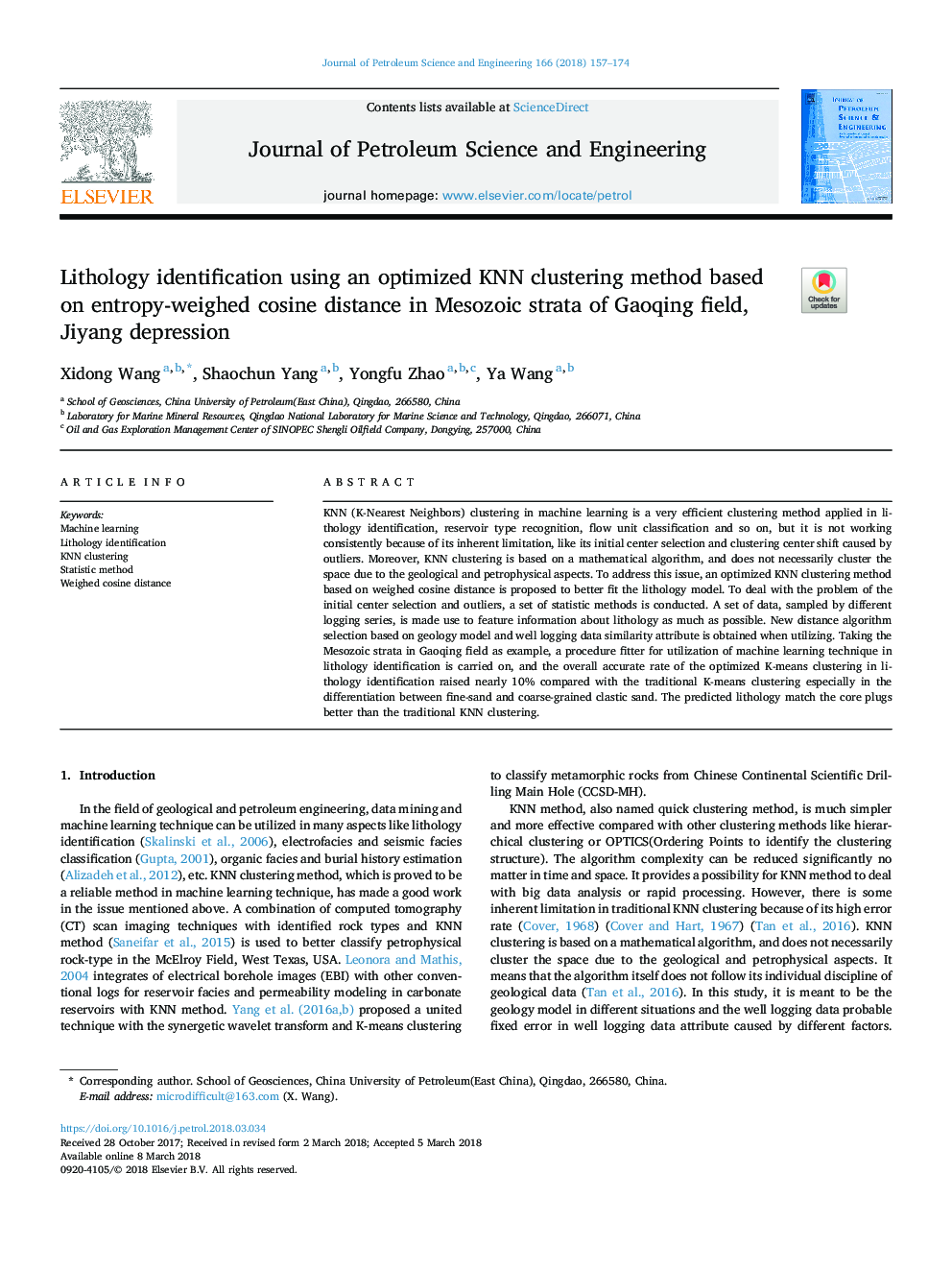| Article ID | Journal | Published Year | Pages | File Type |
|---|---|---|---|---|
| 8124864 | Journal of Petroleum Science and Engineering | 2018 | 18 Pages |
Abstract
KNN (K-Nearest Neighbors) clustering in machine learning is a very efficient clustering method applied in lithology identification, reservoir type recognition, flow unit classification and so on, but it is not working consistently because of its inherent limitation, like its initial center selection and clustering center shift caused by outliers. Moreover, KNN clustering is based on a mathematical algorithm, and does not necessarily cluster the space due to the geological and petrophysical aspects. To address this issue, an optimized KNN clustering method based on weighed cosine distance is proposed to better fit the lithology model. To deal with the problem of the initial center selection and outliers, a set of statistic methods is conducted. A set of data, sampled by different logging series, is made use to feature information about lithology as much as possible. New distance algorithm selection based on geology model and well logging data similarity attribute is obtained when utilizing. Taking the Mesozoic strata in Gaoqing field as example, a procedure fitter for utilization of machine learning technique in lithology identification is carried on, and the overall accurate rate of the optimized K-means clustering in lithology identification raised nearly 10% compared with the traditional K-means clustering especially in the differentiation between fine-sand and coarse-grained clastic sand. The predicted lithology match the core plugs better than the traditional KNN clustering.
Related Topics
Physical Sciences and Engineering
Earth and Planetary Sciences
Economic Geology
Authors
Xidong Wang, Shaochun Yang, Yongfu Zhao, Ya Wang,
